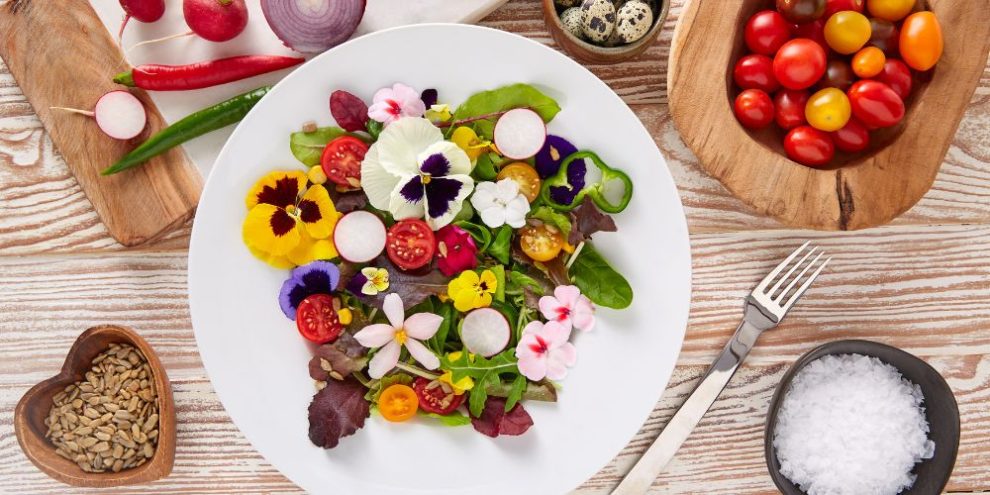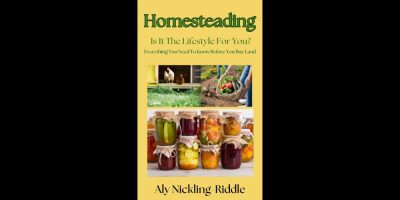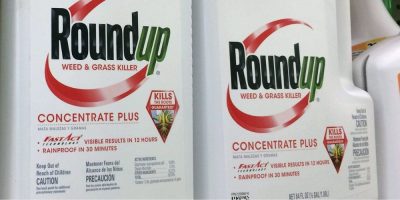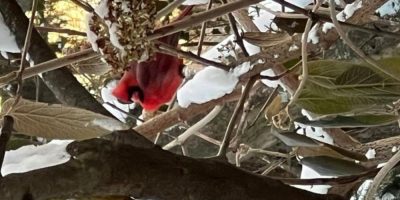
Flowers are a beautiful addition to the garden, but did you know that you can also add them to salads, desserts, and other dishes? There's a whole world of edible flowers for you to explore, offering surprising flavors and a touch of elegance to your dishes.
While many edible flowers thrive in warmer climates, there are plenty that grow well in cooler regions.
Edible flowers you can grow in your garden
Here are some of the many options that are native to, or well-suited for, Ontario gardens …
Barrie's News Delivered To Your Inbox
By submitting this form, you are consenting to receive marketing emails from: Central Ontario Broadcasting, 431 Huronia Rd, Barrie, Ontario, CA, https://www.cobroadcasting.com. You can revoke your consent to receive emails at any time by using the SafeUnsubscribe® link, found at the bottom of every email. Emails are serviced by Constant Contact
Nasturtiums
These vibrant flowers come in a variety of colors, including orange, yellow, and red. They have a peppery flavor similar to watercress and you can enjoy them in a variety of ways:
- Salads: Add whole nasturtium leaves or chopped petals to salads for a peppery kick and vibrant color.
- Sandwiches: Nasturtium leaves or petals can add a delightful peppery punch to your sandwiches.
- Garnish: Dress up any dish with a single nasturtium flower (stem and all) or a sprinkle of petals.
- Vinegar Infusion: Steep nasturtium flowers in vinegar for a couple of weeks to create a unique peppery-flavored vinegar.
Nasturtiums are easy to grow at home, making them a great option for beginner gardeners.
Daylilies
These trumpet-shaped flowers only last a day, but they make a delightful addition to your meal. They have a slightly sweet flavor that you can try in these ways:
- Salads: Add chopped daylily petals to salads for a touch of sweetness and vibrant color.
- Stir-fries: Fry unopened buds for a colorful addition to any stir-fry.
- Battered and fried: Daylily flowers can be dipped in batter and fried for a crispy and sweet tempura-style appetizer.
- Jelly: Daylily petals can be used to make a unique and colorful jelly.
Violets
These delicate little flowers come in a variety of colors, including violet (of course!), white, and yellow. They have a mild, floral flavor with a hint of sweetness. You can eat both the petals and leaves of violets in several ways:
- Salads: Add whole violets or chopped petals to salads for a beautiful and fragrant addition.
- Garnish: Decorate cakes, cupcakes, or other desserts with violets for a touch of elegance.
- Candied violets: Crystallize violets with sugar for a lovely and flavorful garnish.
- Syrups and jellies: Violets can be used to make fragrant and colorful syrups or jellies, perfect for drizzling over desserts or pancakes.
- Tea: Steep violet flowers in hot water for a relaxing and mildly floral tea.
Pansies
Similar to violets, pansies are edible flowers with a mild, sweet flavor. Vibrant and cheerful, they're perfect for adding a touch of whimsy to a number of different dishes:
- Salads: Add whole pansies or chopped petals to salads for a touch of sweetness and vibrant color.
- Desserts: Decorate cakes, cupcakes, or other desserts with pansies for a beautiful and edible touch.
- Candied pansies: Crystallize pansies with sugar for a delightful and elegant garnish.
- Cocktails: Add a pansy flower as a beautiful and edible garnish for a summery cocktail.
Borage
These star-shaped flowers are a beautiful shade of blue and have a cucumber-like flavor. Borage flowers are a good source of vitamins A and C, and you can enjoy them in these ways:
- Salads: Add whole borage flowers or chopped petals to salads for a pop of color and a refreshing cucumber flavor.
- Sandwiches: Tuck a borage flower into your sandwich for a refreshing and visually appealing addition.
- Soups and stews: Add borage flowers near the end of cooking to soups and stews for a subtle cucumber flavor.
- Infused honey or vinegar: Steep borage flowers in honey or vinegar for a few weeks to create a unique cucumber-flavored condiment.
- Ice: Create colourful ice cubes by adding borage to your ice trays before freezing.
Chives
They have a mild onion flavor that can be used in several ways:
- Salads: Sprinkle chopped chive flowers over salads for a subtle oniony kick and a pop of purple color.
- Omelets: Add chopped chive flowers to your omelet mixture for a burst of oniony flavor.
- Cream cheese: Mix chopped chive flowers into cream cheese for a delicious and visually appealing spread.
- Garnish: Use whole chive flowers as a delicate and flavorful garnish for various dishes.
Chives are a perennial plant that's easy to grow in an herb garden.
Zucchini Flowers
These sunny yellow blossoms are a true treat for summer. Unlike the mature zucchini itself, the flowers have a delicate flavor, often described as slightly sweet with a subtle squashy taste. They should be harvested in the morning when they are fully opened and haven’t started to wilt.
Zucchini flowers can be enjoyed in a variety of ways:
- Stuffed: Fill flowers with a mix of ricotta cheese, herbs, and sometimes bits of sausage. Dip in batter and fry for a crispy, flavorful appetizer.
- Tempura: Dip in a tempura batter and lightly fry for a delightful Japanese-inspired dish.
- Salads: Gently tear the petals and add them to salads for a pop of color and a touch of zucchini flavor.
- Pizza topping: Add them fresh or fried on top of pizza before baking.
Harvesting and using edibles flowers
When selecting flowers for culinary purposes, it's crucial to ensure they're safe to eat. Here are some rules you should always follow:
- Identification first: Always correctly identify the flowers before harvesting. If you aren’t sure, don’t eat them.
- Pesticide-free: Avoid flowers treated with chemical fertilizers, pesticides or herbicides. If you aren’t 100% sure that the flowers are organic, you’d better leave them where they are.
- Morning harvest: The best time to pick flowers is early in the morning, after the dew has dried.
- Petals only: Typically, you only consume the petals, unless the recipe specifies otherwise.
- Gentle rinse: To clean the flowers, give them a gentle rinse before using them.
- Start small: Start with a small amount of flowers and see how you react before eating more. Some people may have allergic reactions to certain flowers.
A world of colourful flavours awaits
Edible flowers add beauty and unexpected flavors to your dishes. Experiment with different varieties to discover your favorites. From the peppery kick of nasturtiums to the delicate sweetness of violets, there's a floral feast waiting to be explored in your own backyard.
RELATED: 7 flowers that will help attract honey bees ...











